TALREN is ideal for checking the stability of geotechnical structures, with or without reinforcements: natural slopes, cut or fill slopes, earth dams or dikes. It takes into account various types of reinforcements such as: anchors and soil nails, piles and micropiles, geotextiles and geogrids, steel and polymer strips.
Important: if you have a version older than or equal to Talren v6.1.7, you should upgrade all user workstations manually on an exceptional occasion. To read more

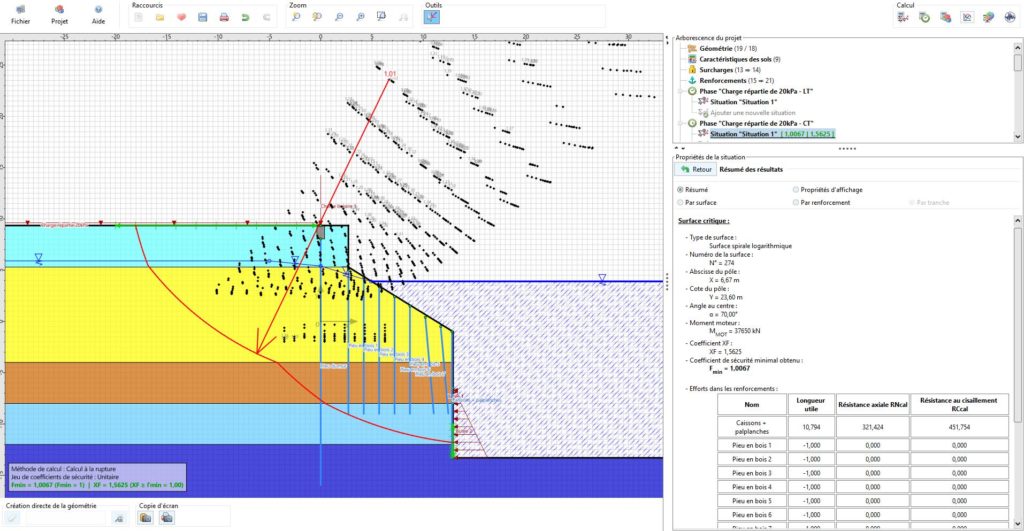
HIGHLIGHTS OF TALREN V6
- use of extensively used standard methods with a calculation engine validated over 20 years of practice
- user-friendly graphical interface, for data input (many input wizards), for result analysis and reporting
- extended applications using the yield design method (logarithmic spirals) to tackle the limitations of the generally used slice methods
- handling of construction stages: several construction stages can be checked in the same project
- consideration of a full range of reinforcement elements: nails/inclusions, tie rods, geogrids, struts etc.
- compatibility with the application standards of Eurocode 7 and in particular with the new standard NF P 94 270 of October 2020 for the justification of nailed soil structures.
- many links with other software: links with Plaxis 2D (geometry, soil characteristics), Autocad (geometry)
- numerous additional modules (see below): slope stabilising piles, integrated calculation of a water-flow regime, sensitivity analyses, calculation of post-earthquake displacements, etc.
Following the recent discovery of a critical flaw in the Java log4j library, we wanted to reassure all our Talren users that the software is not affected by the flaw. No update is therefore necessary.
NEW!
Talren v6 includes a new calculation engine, several new features and additional modules to extend the software’s scope of application:
- Pile module
This complementary module allows a more accurate estimation of the resistance contribution along a reinforcement element of the “nail” type, representative of a pile, an inclusion or a bar working in flexion-shear. The calculation is based on an elasto-plastic model of the “p-y” type, taking into account the multi-layer nature of the soil.
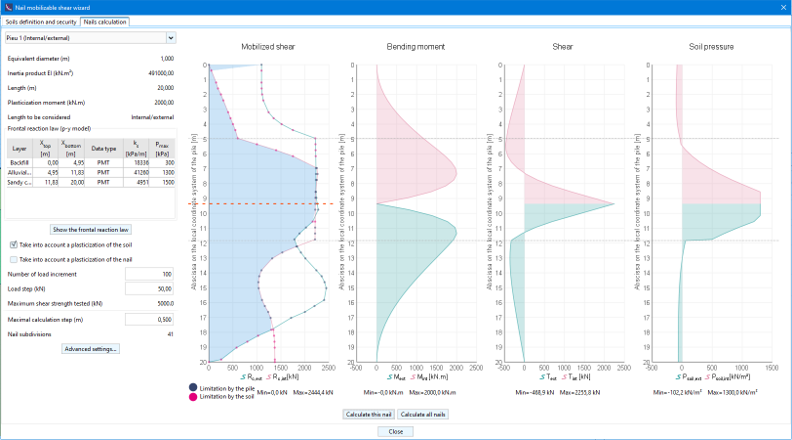
Pile module
- Water flow module
This module allows an integrated calculation, under steady state conditions, of the pore pressure field to be considered for stability analyses. The calculation is based on a numerical resolution of the Laplace equation taking into account the multilayer and anisotropic character of the ground.
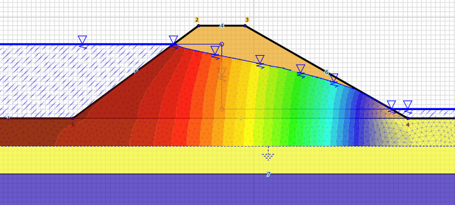
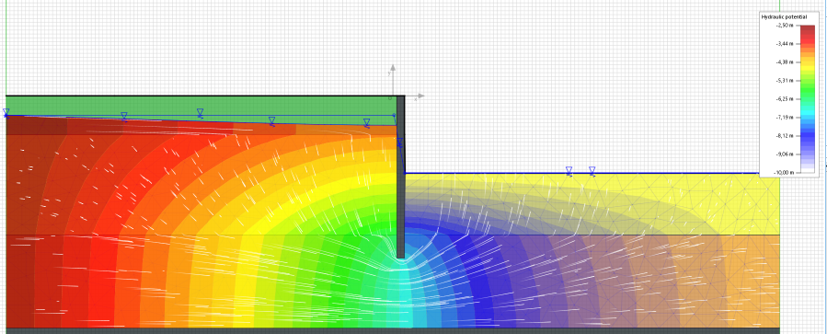
Examples of flow regimes within a dam and around a retaining wall
- Sensitivity module
This module offers the possibility of automatically conducting sensitivity studies to evaluate the influence of the various model parameters on the stability of the structure studied. It is also possible to carry out a reliability analysis which consists in quantifying the safety in terms of reliability index or failure probability (analysis based on the RSM method).
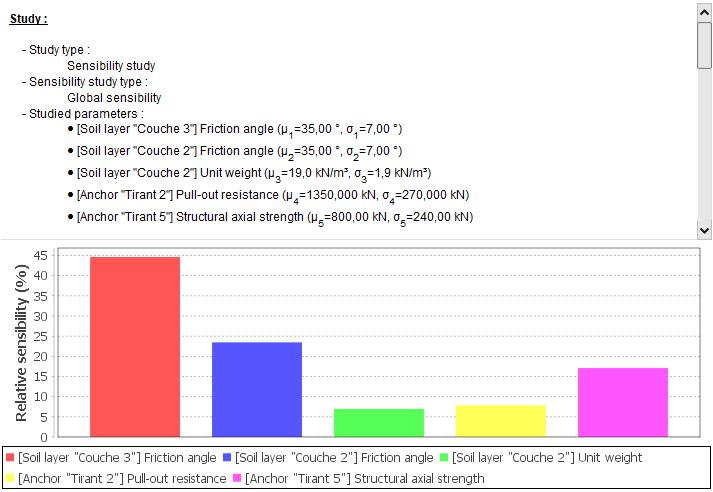
Summary of the results of a sensitivity study
- Internal stability of a nailed soil massif (NF P 94 270 – October 2020)
Talren v6 now offers the possibility of specifying and/or automatically adjusting the forces at the head of the nails required to verify the internal stability of a nailed floor structure, in accordance with the provisions of the new NF P 94 270 standard dated October 2020.
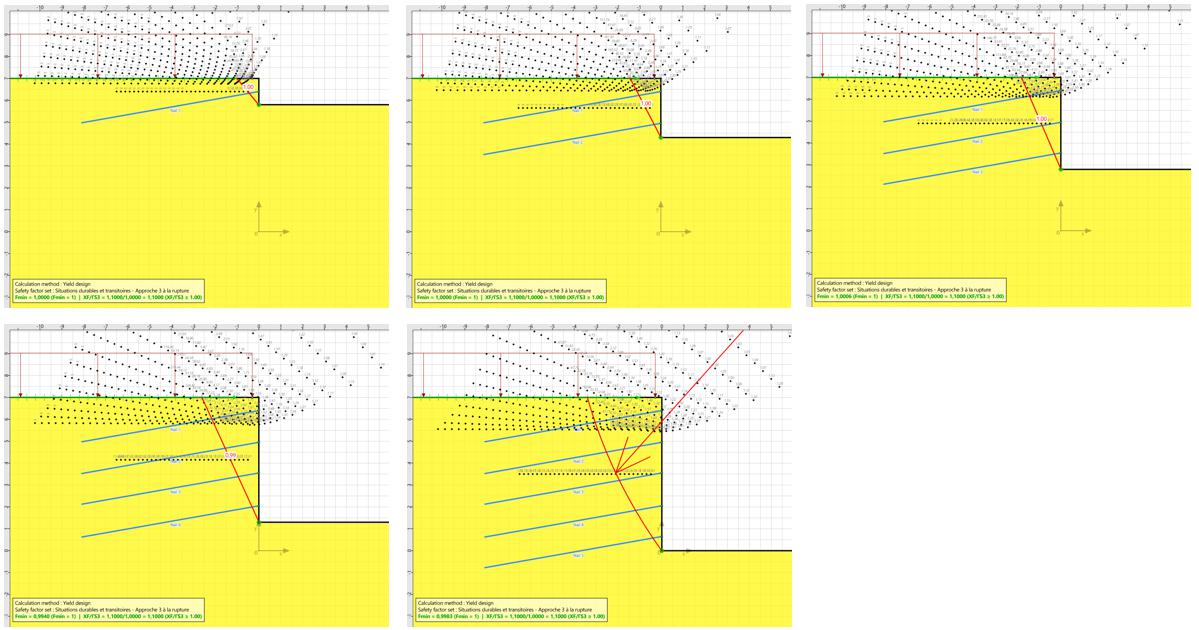
Schematic diagram for automatic nail head force adjustment
- Seismic module
Talren v6 allows the automatic search for the destabilising seismic acceleration (the one leading to the limit equilibrium) which can be used as input to an “Earthquake” wizard integrated in the software, allowing the empirical or analytical calculation of the irreversible post-earthquake displacements (Newmark type model).
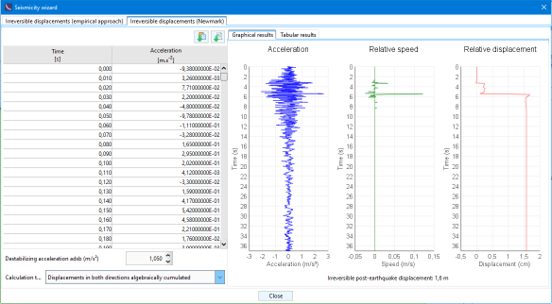
Empirical or analytical calculation of irreversible post-earthquake displacement
This new version also makes it easier to use the yield design calculation method at failure with the possibility of automatically setting the XF factor (which plays the role of the safety factor with regard to the shear resistance). It is now also possible to specifically identify the safety margins for external loads applied in the field (new XQ factor).
To get a quote for a new Talren v6 licence or an upgrade from Talren v5, contact us via the request form.
 Agent Access
Agent Access 



